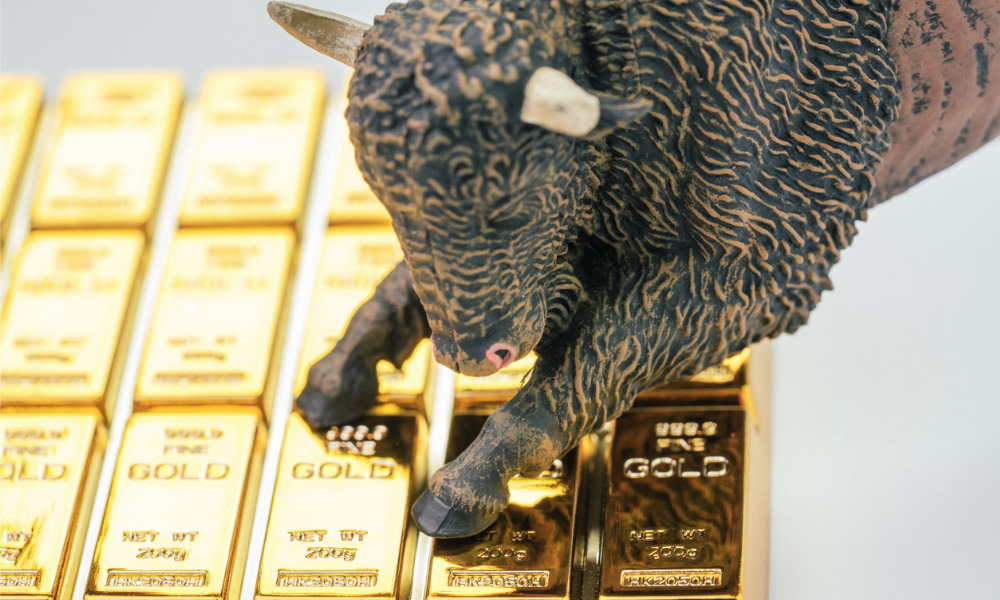CEO explains how gold has come back into vogue and thinks the asset is set to keep performing

After a rough turn in the decade-plus bull market, investors are starting to look at gold favourably again. The CEO of one fund provider thinks advisors should be talking to clients about gold, as a defence against downturns and a means of weathering the longer-term inflationary storm likely to arise from recent central bank decisions.
Michael Kovacs, CEO of Harvest Portfolios, thinks that investors and advisors need to start looking at gold with clear eyes and seeing the value it can bring them through these turbulent times. He thinks advisors need to help their clients cut through the confusing signals around gold and look to where it can add defence and possible upside in a portfolio.
“Prior to the Coronavirus crisis, there was a lot of debt on the books. Now with the trillions of dollars that central banks around the world are throwing at the economy, there’s potential for longer-term inflationary problems. It's devaluing currencies and interest rates are basically down to zero,” Kovacs told WP. “There was a time when investors would ask ‘why would I hold gold, which pays me nothing, when I can get maybe 2% for cash.’ Now they're getting zero for their cash. And gold provides a little bit more of an asset and a little more of a defensive positioning.”
Kovacs says that many investors have seen this logic for some time. Around 2018 a consensus arose that we were late in the economic cycle and some kind of market correction was imminent. That’s when Harvest launched their own gold fund, the Harvest Global Gold Giants ETF (HGGG). Though they didn’t predict the coronavirus would spark this correction, they were already looking to gold’s potential as a defensive asset class, even as the bull market kept on rolling.
The past 20 months have seen significant inflows into gold and gold ETFs for that reason: the looming possibility of a correction. Now the correction has come, there’s an argument that older investors who might not live to see their portfolios recover if they simply hold steady, should redeploy some capital into gold to recoup some of their losses.
“I think older investors or retired investors can comfortably allocate to a gold position,” Kovacs said. “I don't know if they should be going all in, but I think it's just wise to do. As a company, we're constructive on gold and we think we're going to see gold go over $2,000 an ounce in the next 12 to 18 months.”
Kovacs insisted, though, that despite the upside he sees, investors shouldn’t aim for more than a 10 per cent allocation to gold. He also thinks gold ETFs can prove a sensible investment as the price of gold rises. Many gold ETFs were built during the bull market, investing in gold producers who were profitable despite the relatively low price of gold. Now as gold reaches new heights, the rise in prices translates directly into an improved bottom line for those companies and stronger performance for these funds.
Currency devaluation and skyrocketing government debt may be some of the long-term economic impacts of the current crisis. In those situations, Kovacs thinks gold still holds well as a physically scarce asset that won’t lose value as the greenback depreciates.
While Kovacs is convinced of the value of gold, he thinks it’s on advisors to determine just how much of a gold allocation their clients need.
“I think having a position in gold or a gold ETF isn't going to really create any issues for advisors,” Kovacs said. “If you're an advisor looking for a defensive positioning, you’ll work with your clients, know what their income needs are and what their longer term demands are. Advisors can set the allocation as to how much gold or gold ETFs they should hold.”



